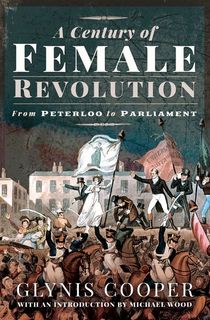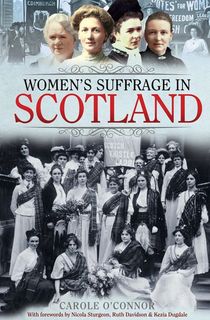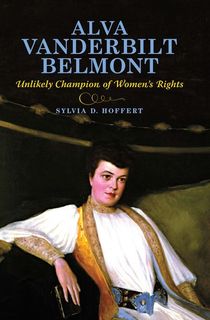The official movement for women’s suffrage took a massive step forward at the Seneca Falls Convention in 1848. After decades thereafter of agitation and protests, the United States finally granted women the right to vote when the states ratified the Nineteenth Amendment on August 18th, 1920. However, even this monumental piece of legislation did not go far enough: the Nineteenth Amendment did not ensure full enfranchisement for women of color. It took further decades of work, pushing well into the 20th century, before the right to vote was truly available to all women in the United States.
While many learned about the basics of this movement in school, it is a much more complex history than the simple key facts you learned in the classroom. In honor of Women’s History Month, we’ve selected 10 women’s suffrage books to help our readers learn more about the decades of hard work necessary for American women to gain the right to vote. Additionally, we’ve included titles from countries outside of the United States to bring awareness to the importance of women’s suffrage worldwide.

Victory for the Vote
This book presents a detailed history of the women’s suffrage movement, from Seneca Falls to ratification of the Nineteenth Amendment. The author, women’s history expert Doris Weatherford, then contextualizes the women’s suffrage movement by discussing other challenges for women's rights in the subsequent decades, such as reproductive rights and the Equal Rights Amendment. Additionally, this book edition includes a foreword by Congresswoman Nancy Pelosi.

A Century of Female Revolution
Between 1819 and 1919, women's rights underwent massive changes in England. During this period, women went from not even being considered people by the law to achieving full legal rights and universal suffrage. This transformation was not easy, and the suffragists faced brutal pushback and retaliation from both men and women alike. A Century of Female Revolution brings to light the sacrifices and perseverance in the face of adversity that made women’s suffrage in England possible.

Women's Suffrage in Scotland
In this book, delve into the stories of the brave women who fought for their right to vote in Scotland during the Victorian and Edwardian periods. Follow along as the book journeys through different Scottish cities and towns to reveal how these tenacious women were treated, whether at home, in the workplace, or by the law. Beyond just describing what those women did, this book also informs readers how these women’s actions were perceived by their communities and family members using firsthand accounts and photographs.

Alva Vanderbilt Belmont
Discover the story of Alva Vanderbilt Belmont, a wealthy New York socialite who used her money and status to further the cause for women's right to vote. Belmont was known to be temperamental and bossy: She knew what she wanted, and more often than not, she got it. This attitude is what galvanized her when she joined the women's suffrage movement in 1909, and that along with her celebrity is what made her successful in helping convince Congress to pass the Nineteenth Amendment.
In this book, Sylvia D. Hoffert draws upon Belmont’s own memoirs to narrate the life and history of this “feminist visionary,” whose participation was key to the success of the women’s suffrage movement.

The Myth of Seneca Falls
An excellent read for anyone wanting to discover lesser-known information about the mobilization of the women’s suffrage movement, this book argues that the story of the movement beginning at Seneca Falls in 1848 is a “cherished myth.” Professor Lisa Tetrault argues that Seneca Falls was just one of many events of similar importance and introduces the idea that Elizabeth Cady Stanton, Susan B. Anthony, and Lucretia Mott and their peers began planting the roots for this movement more gradually over the preceding years. The Myth of Seneca Falls is scrupulously researched, teaching readers new facts while simultaneously weaving a fascinating story.

She Votes
She Votes not only tells the story of how women won suffrage, but also of the women who have continued to fight for equality ever since, from the first female Principal Chief of the Cherokee Nation to the first woman to wear pants on the Senate floor. Additionally, in honor of the 100th anniversary of the Nineteenth Amendment, this book includes 100 amazing illustrations by 100 female artists.

The British Women's Suffrage Campaign
Edited by June Purvis and June Hannam, the 12 chapters in this book offer fresh perspectives on the campaign for women's suffrage through the voices of 12 feminist historians from around the world. While the book mainly focuses on Britain, it also illustrates the movement's global impact. Early chapters focus on the foremost leaders of this movement, while later chapters reveal the relationship between Britain and women's suffrage movements in other countries, including Japan, New Zealand, and the United States.

Lifting as We Climb
Lifting as We Climb tells the important, yet often overlooked story of the African American women who were not only fighting for enfranchisement, but also to be seen as equal citizens. Many white abolitionist-suffragists did not want to prioritize sharing the right to vote with women of color, and as a result, women of color had to fight twice as hard to achieve the same right. And though they were not seen as equal partners, Black women were a force to be reckoned with in the battle for women’s suffrage in the United States.
In addition to sharing the powerful story of African American suffragettes, author Evette Dionne reveals the ties between abolition, suffrage, civil rights, and contemporary activists to contextualize and paint a richer picture of the American suffrage story.

Why They Marched
This book tells the story of 19 women—including a Black journalist, a mountain-climbing physician, a Southern novelist, a polygamous Mormon wife, and two sisters on opposite sides of the suffrage divide—who worked tirelessly behind the scenes to fight for women’s right to vote. Many of these women never thought they would become involved in politics, yet they found themselves taking the risk and fighting for this important cause. In Why They Marched, these courageous pioneering feminists are given the spotlight they deserve in a literary work that “demonstrates the steady advance of women’s suffrage while also complicating the standard portrait of it” (The New Yorker).

The Women's Suffrage Movement
This intersectional anthology, comprised of historical texts spanning over 200 years, features the writing of well-known suffragists as well as those who were overlooked and underestimated. Unlike other volumes containing important texts about the women’s suffrage movement, this book stands out for its particular focus on examining all races, economic classes, and genders. Discover pieces by Susan B. Anthony and Elizabeth Cady Stanton, in addition to works by little-known Native American and African American suffragists.






